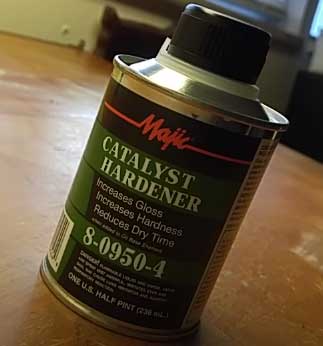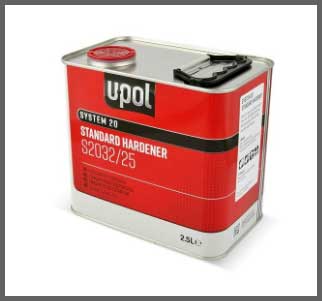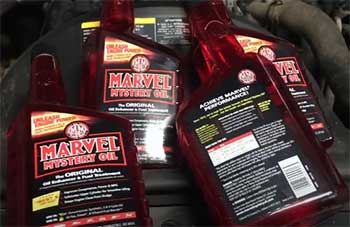Raptor liner is a hard, tintable protective coating that gives surfaces a layer of defense against the worst circumstances. You can use Raptor liner to protect industrial surfaces, marine and off-road vehicles, truck beds, and much more by spraying or rolling it on.
A two-part urethane coating creates the Raptor liner and it protects vehicle beds against corrosion, abrasion, and impact damage.
The Raptor liner hardener is mixed with the Raptor Liner material before application to increase the coating’s durability. But you can also use other hardeners and in this article, you will get to know about them in detail.
Raptor Liner Hardener Alternatives That You Can Consider For Your Vehicle
Now let’s talk about those hardeners you can use on your vehicle for better surface –
- Majic Catalyst Hardener
You can use Majic Catalyst Hardener as an additive to Majic Paints or with other brands’ paints. It improves the durability and overall performance of the paint, making it more resistant to wear, fading, and chipping.

Additionally, the use of the hardener enhances the gloss of the paint, resulting in a smoother and more professional-looking finish.
Another advantage of this hardener is that it shortens the drying time, allowing for quicker recoating and overall project completion.
Moreover, using this hardener increases the film thickness of the paint, providing better coverage and protection against harsh environmental conditions.
Since the hardener is specifically designed to work with Majic Paints, it ensures compatibility and optimal performance while mixing with Majic Paints.
But it can give you almost similar results if you use it with the Raptor line.
While Majic Catalyst Hardener offers several advantages as a paint additive, there are also some potential disadvantages and cons to consider.
One disadvantage is that the mixing ratio must be precise and followed carefully to achieve the desired results; otherwise, the paint may not dry easily.
Another potential issue is that the hardener may make the paint more difficult to clean up.
It may not also be suitable for all types of projects or surfaces, and it’s important to consider the project’s specific needs before using the product.
Many customers have been satisfied with the improved durability and finish of their projects, but some of them have reported issues with the mixing ratio, finding it challenging to achieve the right consistency and dry time.
However, considering overall reviews, it can be a good Raptor liner hardener substitute for you.
Also Read: Alternatives To Headliner Board.
- U-Pol Standard Hardener
U-Pol Standard Hardener is a two-component hardening solution that is designed to work with vehicles’ body fillers and coatings. It is a high-quality, fast-drying hardener with excellent adhesion, hardness, and durability.
The hardener is specifically formulated to work with U-Pol’s body fillers and coatings, providing a smooth and easy-to-sand surface. But as U-Pol is the manufacturer of the Raptor line, U-Pol hardeners also work well with the Raptor line.

U-Pol Standard Hardener is made up of a high-quality organic peroxide that reacts with the resin in the body filler or coating to initiate the curing process.
U-Pol Standard Hardener is available in different sizes to suit different application requirements and can be used in various industries other than automotive applications.
However, one problem you can face while working with a U-pol Standard hardener is it has a strong odor that can be unpleasant to work with, especially in poorly ventilated areas.
It is recommended to use the hardener in a well-ventilated area to reduce exposure to fumes.
- Sherwin-Williams Automotive Hardener
Sherwin-Williams is a leading manufacturer of automotive paints and coatings, and their automotive hardener is an essential component in the painting process.
Sherwin-Williams offers various automotive hardeners designed to work with different types of automotive paints, including primers, basecoats, and clearcoats. These hardeners come in different formulations that are tailored to specific temperature and humidity conditions, as well as the desired drying time.
Some of the most popular Sherwin Williams automotive hardeners include the CC950, a fast-drying, high-solids clear coat hardener. This hardener is formulated for use in temperatures between 70 and 90 degrees Fahrenheit and can dry in as little as 20 minutes.

Another popular hardener from Sherwin Williams is the MH167, a medium-speed hardener.
This hardener is formulated for use in temperatures between 65 and 80 degrees Fahrenheit and can dry in as little as 30 minutes.
Sherwin Williams also offers a slow-drying hardener, the MH166, which is designed for use in cooler temperatures between 55 and 70 degrees Fahrenheit.
This hardener can take up to 2 hours to dry, but it offers excellent flow and leveling properties, making it a popular choice for professional automotive painters.
Overall, Sherwin Williams automotive hardeners are must-have components in achieving a high-quality, durable automotive paint finish. They are designed to work seamlessly with Sherwin Williams and other coatings, ensuring optimal performance and long-lasting protection.
Is Raptor Liner Hardener Worth It?
The Raptor liner hardener is mixed with the Raptor Liner base component in a 1:1 ratio to form the protective coating. Once mixed, the solution should be applied to the surface within a specified time frame, typically 60-90 minutes.
The hardener is formulated to crosslink with the base component to create a hard, durable, and flexible coating that adheres to the surface.
The Raptor liner hardener is formulated to provide superior chemical resistance, making it ideal for harsh environments. It is resistant to gasoline, diesel fuel, motor oil, and other chemicals commonly found in industrial settings.
One of the main advantages of the Raptor liner hardener is its quick-drying properties.
Once the coating is applied, it dries to the touch in just a few hours, and the surface can be put back into use within 24 hours.
This makes it an ideal solution for busy environments where downtime is not an option. So, considering the overall specifications, the Raptor liner hardener is totally worth it as your automotive coating.
Also Read: Differences Between Line-X Bedliner And Bullet Liner.
Frequently Asked Questions (FAQ)
It is advised to use a Raptor liner hardener with Raptor liner. However, you can also use other similar types of hardeners with Raptor liner.
You can use any urethane-based thinner with Raptor liner.
The amount of hardener a raptor liner needs is based on the ratio of 3:1. That means 15 liters of RAPTOR need 5 liters of hardener.
Firstly, add the appropriate amount of Raptor liner hardener to the mixing container. The recommended mixing ratio is typically 10% hardener to 90% liner. Stir the mixture thoroughly with a stir stick or mixing paddle. Be sure to mix the hardener and liner together completely. Allow the mixture to sit for a few minutes to activate the hardener before applying it to the surface.
Final Words
Raptor liner hardener is generally mixed with Raptor bed liner, but you can use it with other polyurethane coatings to increase their durability and resistance to wear and tear. However, the Raptor liner hardener may not always be available to you.
In that case, you can easily use the Raptor line hardener substitutes that I mention above. Whether you use Raptor line hardener or other hardeners, always make sure your mixing ratio is appropriate, and you’re giving it enough time to sit.

